It’s done. That last 3 kilometers of Av. Rivadavia is now simply a memory, or will be at the end of this post. It really wasn’t as bad as I thought it might be back at the beginning – 11.6 kilometers is a whisper over 7 miles – so splitting it up into 8 blocks of coverage worked out just fine (even if we didn’t end up with 12 vertebrae for the tour – you’ll have to go back to the 1st for an explanation of that). I would say that this last stretch was the least interesting overall – particularly in architecture – but at the same time held some surprises. So we pick up in the barrio of Velez Sarsfield on the way into Villa Luro, and finally we’ll end up in Liniers….
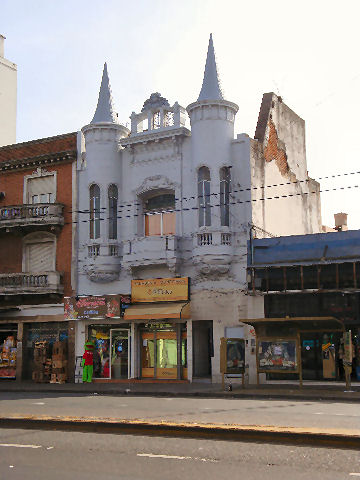
At 8865 is this small building that, architecturally speaking, might have been the most interesting piece along the whole walk, which will give you a sense of where we’re headed…. It’s a former home that is now a couple of apartments above a costume shop and bakery. Beyond that, I didn’t find any information. I do like how you can see that the entire interesting part of the structure is purely facade, behind that, it’s nothing but a squat brick block of a building.
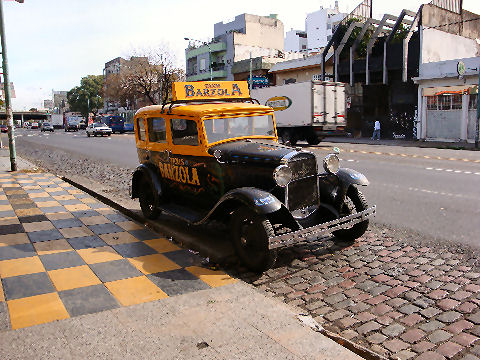
This strip of Av. Rivadavia seems to be the home of the garages for a large number of the city’s taxi companies – I counted around 20 different companies over a stretch of the same number of blocks. Also just as many car dealerships and repair shops. Apparently that’s the core industry of Velez Sarsfield and Villa Luro.
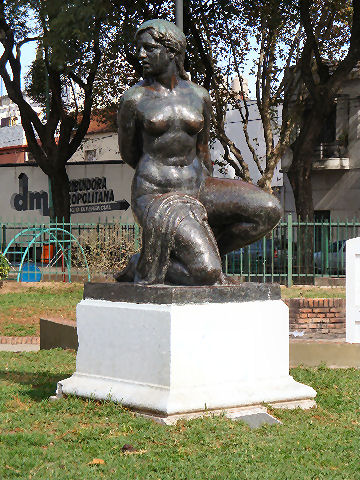
In the Plazoleta Vicente Bellini is this statue, La Cautiva, or “The Captive”, by artist José Santiago Chiérico. First off, the plaza. Vicente Bellini had nothing to do with the cocktail, which was named in tribute to the artist Giovanni Bellini. This was Vincenzo Bellini, composer of numerous operas, the most well known of which is probably Norma. As to why his little plaza is at this particular junction, commonly known as las trés vias, or “the three ways”, where a trio of streets come together, I have no idea. The statue is a bronze and marble work is one of many in the city by Chiérico, an early 20th century sculptor who was born just outside of La Plata. He was one of the “disappeared”, vanishing without a trace on June 24, 1974 if I’ve got my history right.
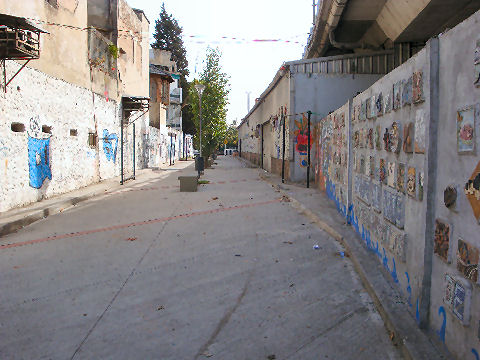
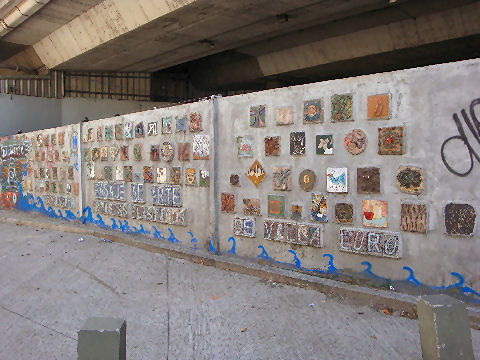
Just before passing under the expressway in the 9500 block I spotted an indoor go-cart racing track, which was closed at that time of day, but sounded like it might be kind of fun. On the other side of the highway, this walkway, called Amigos de las Artes, showcases an amazing array of tiles designed by local artists, and hosts open-air art expositions on the weekends and holidays.
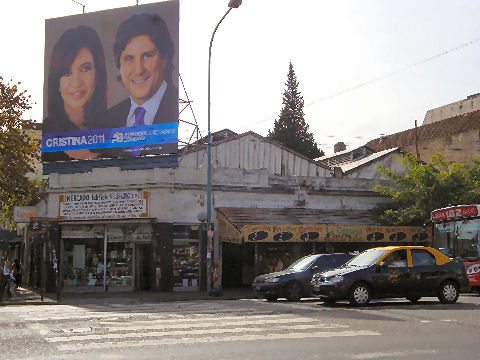
I initially thought that the Mercado Edificio Villa Luro was part of the old central market system, one of the remaining ones, but it turns out not to be, instead being a warehouse style market that was built on the site of a former theater. I’d have gotten a few inside shots, but it was past 1pm and the market was on siesta other than the vegetable stand in the front.
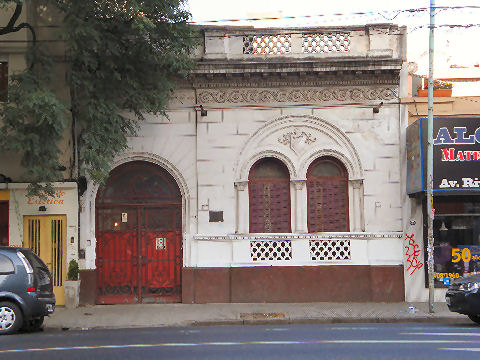
This house at 9714 isn’t all that interesting architecturally, but sported a historical marker linking it to a local doctor, Rodolfo Juan Ferrari. He apparently ran his medical practice from here for 48 years, the plaque is a tribute to him from the neighborhood. It is now occupied by a chapter of the PRO political party.
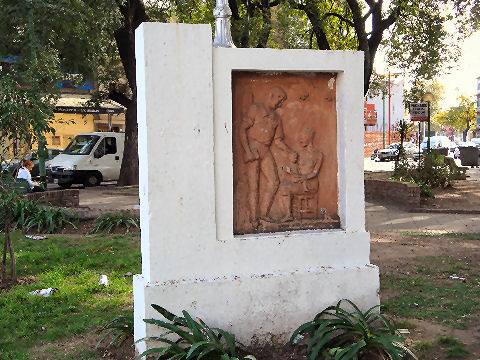
A small plaza dedicated to Lieutenant General Adolfo Arana, who apparently was best known for being a proponent of fairly rigourous physical education for children (and therefore the bane of anyone like myself who hated gym class). According to what I could find about the plaza there is supposed to be a monument with the emblem and shield of the barrio, which illustrates the man himself holding an open book on which are inscribed the names of various famous historical authors, like Moliere, Hugo and Dante. But all I saw was this plaque of a man with a book in his hand patting the head of a child seated in a woman’s lap. Perhaps the other has been removed for renovation….
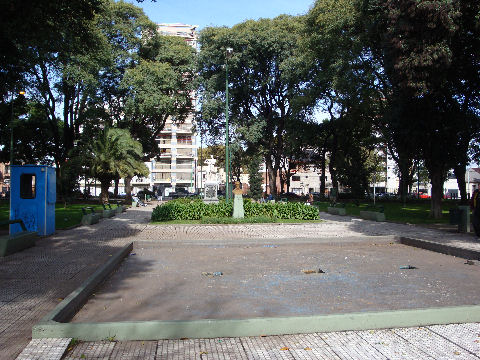
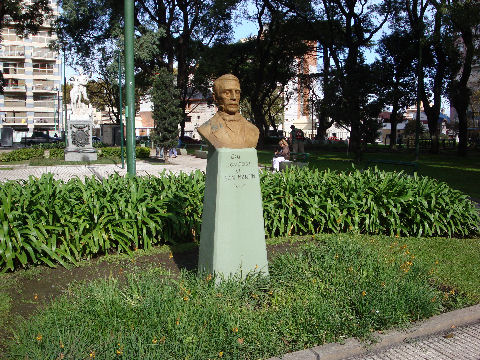
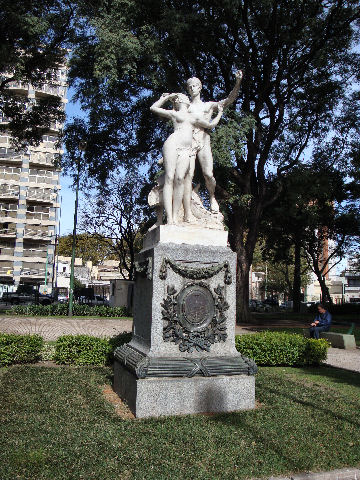
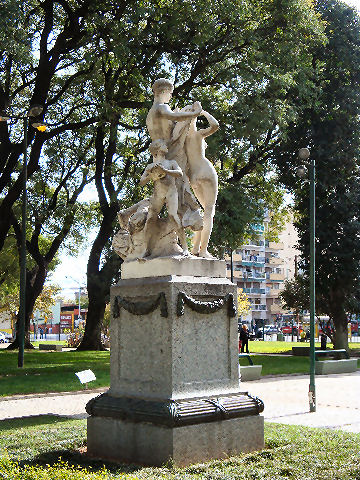
Just a touch further on, the Plaza del Ejército de los Andes, or the Plaza of the Andean Army, created in 1939 as an homage to General San Martín, a small bust of whom is the first sculpture one sees – and was apparently restored in March of this year – you can see it’s already been defaced a bit. Dominating the center of the plaza, however, is this sculpture El Progreso, produced in 1906 in Paris by sculptor Edme Antony Paul Noël, more commonly known as Tony Noël. Apparently the sculpture was originally selected and displayed at Teatro Colón after a design competition. When and why it was relocated, I don’t know.
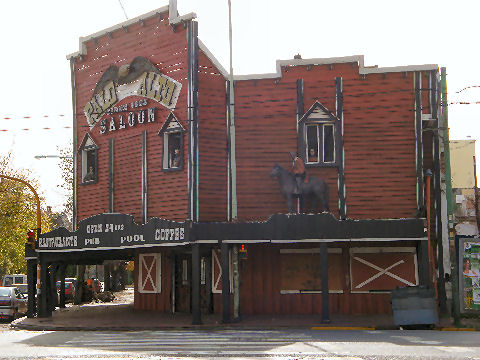
Just the kitsch factor alone would have gotten me in the door for lunch at the Palo Alto Saloon, at #10699, if it were still open, but it’s boarded up. I mean, come on, a 24 hour a day hamburger and steak joint with cowboys, what more can you ask for?
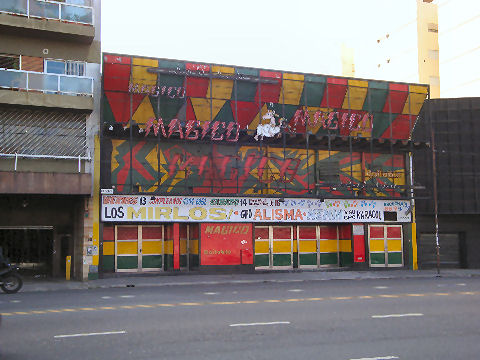
I suppose you could go dancing before or after at the colorful Club Magico, at 10925 along the avenue….
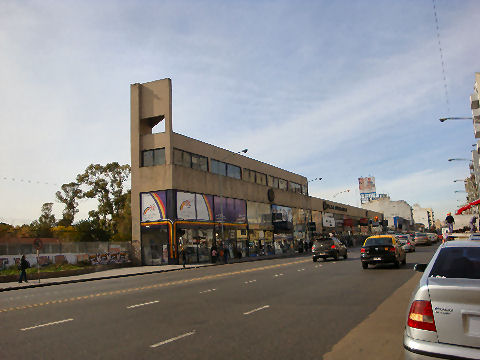
Of shopping at the ViaRivadavia mall a couple of blocks further on.
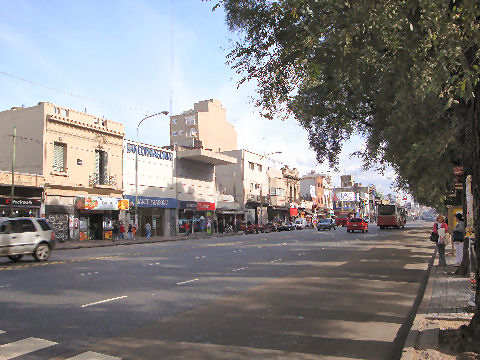
But at this point, I move on into that last stretch of the avenue, which becomes very commercial, packed with little outlet type stores selling cheap clothes, electronics, and whatever else one might want on the spur of the moment.
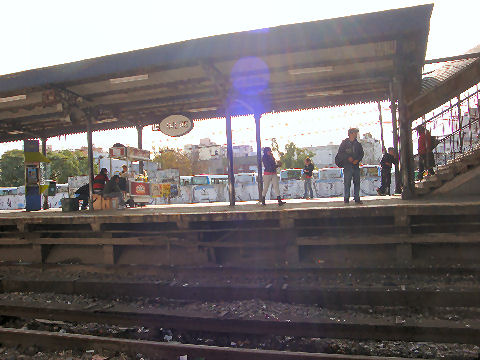
The Liniers train stop is across from the commercial strip, and is where I’ll return to shortly to take the train back into Estación Once.
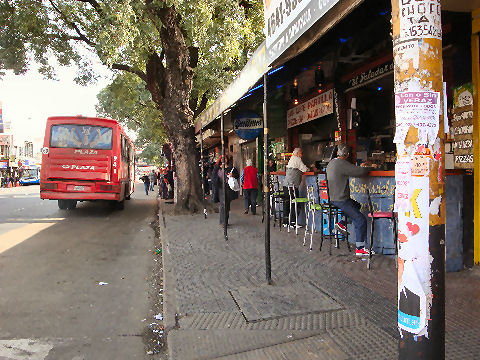
I’m not likely to stop at one of these stands along the tracks selling cheap sandwiches, mostly milanesas, and empanadas – most of the food is just sitting out on the counter with flies around and waiting for anyone who wants to shell out a few pesos while awaiting a train. Many of the stands even have bars serving up beer, wine and cocktails – fascinating.
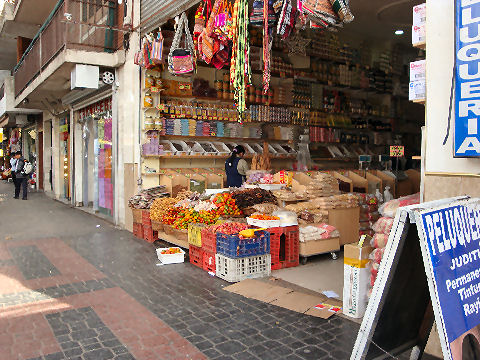
This is also where you can make a side trip into the Bolivian markets along Suarez.
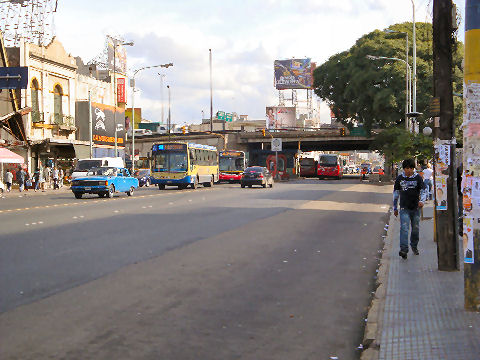
But the end is in sight… right there at the overpass of highway General Paz.
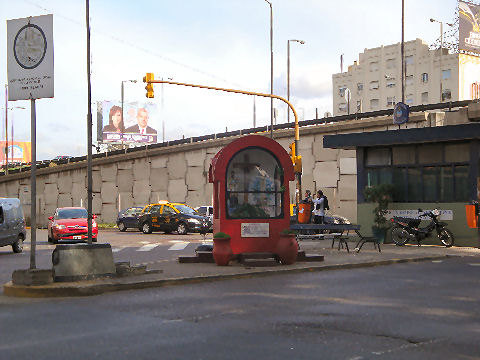
And, while the avenue doesn’t end here, continuing on out into the suburbs and further to the countryside, this is the end of my walk, at a small police checkpoint and shrine to one version or another of the Virgin Mary, probably the one dedicated to travelers… I think that’s the Virgen de Lujan.
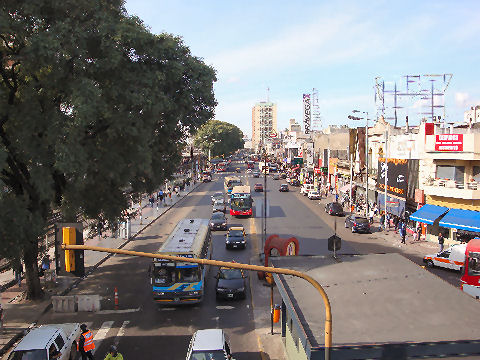
Up onto the overpass for a last look back at the avenue.
Next time, interim president Alejandro Vicente López y Planes gets his stroll.
It’s funny how this post made me see all those places I used to hate in a different light. Although Liniers is still every bit as filthy as the last time I was there. Let me tell you, trying to catch a bus in Liniers is no fun! And the train is a nightmare at rush hour. But kudos to you for taking such a long walk!
Yes, no question it’s not a neighborhood I’d go to to hang out, though we do run out there when we need certain ingredients post-haste (otherwise, one of the Bolivian women who sells stuff on the street nearby is very good about bringing things with her next day if I ask). But there were some interesting surprises, like the Amigos de las Artes walkway – I’d actually like to return to there one weekend when they’re having an exposition. In better weather than we’re having today….
[…] who became the caretaker, or interim, president of Argentina for a mere 5-6 weeks in mid 1827 when Rivadavia, the subject of my last series of walks, was forced to resign after a negotiations scandal with […]
aporto un dato sobre la propiedad de av. Rivadavia 9714, pertenecia al dr. Rodolfo Ferrari, medico de profesion y politico destacado, fue diputado nacional constituyente, apodado cariñosamente “el gordo ferrari”, personalidad destacada de la vida social de Villa Luro, hoy la propiedad pertenece a sus herederos, dentro de los que se cuenta Agustin ferrari actual presidente de la comuna 10.